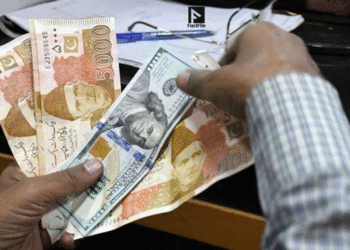Pakistan’s Trade Deficit in FY25 has deepened by 9%, with the total deficit swelling from $24.10 billion in FY24 to $26.27 billion in FY25, according to new data from the Pakistan Bureau of Statistics.
- Exports in the Pakistan Trade Deficit FY25 report increased by 4.7%, reaching $32 billion (FY24: $30.67 billion).
- Imports, meanwhile, rose by 6.6% to $58.38 billion (FY24: $54.78 billion), further widening the Pakistan Trade Deficit FY25.

In June, monthly trade figures for the Pakistan Trade Deficit FY25 showed:
- Exports: $2.54 billion (–0.6% Y/Y; –4.8% M/M)
- Imports: $4.86 billion (–2% Y/Y; –7.1% M/M)
- Monthly trade deficit: $2.56 billion
Why the Pakistan’s Trade Deficit FY25 Matters
Despite steady export growth, rising imports—especially for energy, machinery, and textile raw materials—have outpaced gains, worsening the Pakistan Trade Deficit FY25.
This widening gap is adding pressure on the country’s foreign exchange reserves at a time when costly petroleum imports from the GCC continue to weigh heavily on the national exchequer.
Regional Impact
Trade with neighbouring countries has further influenced the Pakistan Trade Deficit FY25. The gap with nine nearby nations widened by over 32% to $11.17 billion in the first 11 months of FY25, compared to $8.41 billion a year ago.
Much of this jump comes from surging imports from China and India, while export growth has remained moderate.
Forecast & Policy Direction
- The Pakistan Trade Deficit FY25 expanded by around 3% each month in early FY25, and analysts earlier projected the final gap could reach up to $27.8 billion if trends continue.
- On the positive side, remittances have offered partial relief, with a 31% year-on-year increase bringing inflows to $31.2 billion by April FY25, which has supported the current account balance.
To contain the Pakistan Trade Deficit FY25, experts stress the need for Pakistan to:
- Boost exports through diversification and improved competitiveness.
- Manage unnecessary imports, especially in energy and raw materials.
- Pursue balanced trade deals to open new international markets.
- Strengthen local manufacturing to reduce dependence on costly imports.
For more updates on Pakistan’s economic trends and trade performance, keep following FactFile.

























